Found 35 Results

Adam Riess
There are so many ways to cope with the Big Four-O Crisis: one might run a marathon, buy a Harley-Davidson, or start pottering with organic clay, in order to be happy.
By the time Adam Riess, whose parents escaped Nazi Germany in 1936, reached 40, he had already discovered that the expansion of the universe is accelerating – and was awarded a Nobel Prize for this discovery. Odd guy.
In order to understand what “the expansion of the universe is accelerating” even means, let us go back some 14 billion years. mose scientists assume, that the universe was formed at a moment in which a factor – be it the big bang, the singular point or God – decided to start inflating the “time-space” balloon.
In 1928 the American scientist Edwin Hubble that the distances between galaxies throughout the balloon universe, including our very own milky way, are growing constantly. Riess’ discovered that the expansion is accelerating.
Hubble struggled for recognition his entire career, however at the time, the Nobel Prize in Physics did not recognize work done in astronomy. His work was only recognized after his death. In a way, Adam Riess’ Nobel Prize not only shed new light on the mystery of the universe, but also redressed the wrongs done to Hubble.
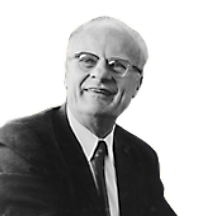
Bethe Hans
Hans Bethe was born in 1906 in Strasbourg, Germany. In 1928, he received his doctorate from the University of Munich, and was later appointed assistant professor at the University of Tübingen. When the Nazis came to power in 1933, he lost his job and emigrated, first to England and then to the United States, where he worked as a professor of nuclear physics at Cornell University.
In 1967, Hans Bethe was awarded the Nobel Prize in Physics “for his contributions to the theory of nuclear reactions, and especially his discoveries concerning the energy production in stars”.
Bethe proposed a solution to a problem that had long troubled many astronomers: How is energy formed in the sun and stars? He suggested that there is a six stage process of nuclear fusion of various atoms in which enormous energy is emitted.
The products of this process are contradictory. On the one hand, there is solar light with the pleasant heat that is the source of our life. But on the other hand, we have the means to destroy us all – the hydrogen bomb which is based on the identical principle of fusion. Bethe actually worked on the development of the hydrogen bomb. However, after World War II, he became one of the most enthusiastic supporters of nuclear weapons control and fought against American armament plans.
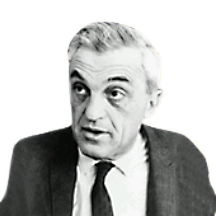
Bloch Felix
Felix Bloch was born in Switzerland in 1905. In 1933 he immigrated to the United States of America.
Felix Bloch received the 1952 Nobel prize in physics for the precise measurement method he developed, which makes it possible to identify materials without damaging them. This method is applied in techniques such as computerized axial tomography.
Felix Bloch passed away in 1983.
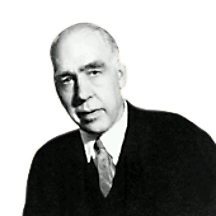
Bohr Niels
Niels Bohr was born in Copenhagen. His father, Christian Bohr, was a professor of physiology. His mother, Ellen Adler, was the daughter of a prominent Jewish family in Denmark. Bohr distinguished himself at the outset of his career and in 1907 he was awarded a gold medal by the Danish Royal Academy of Science for his Bachelor of Arts project.
Upon receiving his doctorate degree, Bohr went to England to study at Cambridge with J.J. Thomson, the discoverer of the electron. However, he became interested in the research of Ernest Rutherford on the structure of the atom and went to Manchester to work with him.
In 1913, he published his own model of the atom, a revolutionary theory that served as a cornerstone for twentieth century physics and earned him the Nobel Prize.
In 1916, he was appointed professor at the University of Copenhagen, and in 1920, he established the Institute of Theoretical Physics and was its director until his death.
Niels Bohr was likable and well rounded; in addition to his scientific work, he devoted his time to sport and even played on a football team.
In 1943, during the German occupation of Denmark, he fled to Sweden, from there to England and, later, to the U.S. where he participated in “the Manhattan Project” for the development and production of the atomic bomb. After the war, he did his utmost to prevent the proliferation of atomic weapons.
Niels Bohr died of a stroke on November 18, 1962, in Copenhagen, the city of his birth.
Niels Bohr was awarded the 1922 Nobel Prize in Physics, “for his contribution in research into the structure of the atom and the radiation it emits. His most outstanding achievement was the model of the structure of the atom that he published in 1913. This model integrated the quantum theory, still in its infancy, with atomic physics and provided answers to key questions puzzling physicists of that period.
Upon discovering that the atom has a positively charged nucleus and negatively charged electrons, physicists theorized that electrons circle about the nucleus like planets about the sun. According to the laws of classical physics, they would then lose energy and enter a spiral course which would consequently cause them to collapse into the nucleus. However, electrons are never found in the vicinity of the nucleus.
Furthermore, an examination of radiation released by atoms, particularly the hydrogen atom, reveals that this radiation is not emitted at all frequencies. Classical physics cannot explain the existence of “allowed” frequencies and “forbidden” ones.
To resolve this contradiction, Bohr proposed a solution deviating from classical physics: he determined that electrons circle about the nucleus only in certain circular “allowed” orbits, each one characterized by a particular value of energy. Electron do not give off energy while they are orbiting around the nucleus. When they pass from an orbit of higher energy to one of lower energy, However, they emit the difference in energy in the form of radiation. The radiation is thus released in units of energy corresponding to the differences in energy of the various orbits and is limited only to these units.
Bohr explained that radiation frequencies must correspond to the units of energy emitted from the electron. This idea corresponds to the theory that radiation is emitted in individual units of energy called “quanta”.
The Bohr model led to the development of quantum mechanics, one of the major scientific achievement of modern physics which explain a lot of phenomenons.
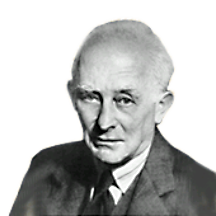
Born Max
Max Born was born in 1882 in Germany. With the rise of the Nazis he immigrated to England.
Born received the 1954 Nobel prize in physics “for his fundamental research in quantum mechanics, especially for his statistical interpretation of the wave function.”
Max Born passed away in 1970.

Charpak Georges
Georges Charpak was born in 1924 in the little Jewish town of Sarny, Ukraine. He was 8 years old when his family emigrated to France. During the German occupation of France, Charpak joined a leftist group of resistance, was arrested in 1944 and deported to Dachau camp. He was liberated in 1945, being only 21. He started working in the “National Center for Scientific Research” in which he obtained his PhD. in experimental nuclear physics.
In 1957, Charpak published, at first, his ideas about detectors of particles; but his colleagues were not yet ready to exploit his proposals. In 1959, he joined the Leon Lederman team at CERN (The “European Organisation for Nuclear Research”) in Geneva to measure the magnetic moment of the muon. Since then, he didn’t leave this Center, forming his own team, pioneering in development of particles’ detectors.
In 1992, Georges Charpac was awarded the Nobel prize in physics “for his invention and development of particle detectors, in particular the multiwire proportional chamber”.
This invention made it possible to increase the data collection speed for registering charged particle trajectories and interactions. The development of detectors goes hand in hand with the general scientific progress. During the last two decades, various types of particle detectors based on Charpak’s original invention have been of decisive importance for many discoveries in physics, with various applications in medicine or biology.

David Gross
David Gross was fascinated by the mysterious world of physics since childhood. He was enchanted by the evolution of riddles, and how from cracking one riddle, yet another one emerges.
When he received his doctorate degree from Harvard University, he was challenged with the following riddle: I am whimsical, no one has ever seen me but I am the origin of existence – and I am not God. Gross knew that the answer is a small mischievous being whose name is taken from James Joyce’s “Finnegans Wake”.
The Quark
Quark is one of the ancestors of the world of particles. Until now it was only seen in groups. It belongs to the family of “elementary particles” – the fundamental particles of matter known in physics today.
Until the discovery of the Quark, it was commonly believed that the atom’s nucleus consists only of protons and neutrons. However, this is the riddle: protons carry positive charge and therefore reject one another. Why then doesn’t the nucleus come apart? Well, it does not.
Physicists assumed that yet another anonymous force in involved within the nucleus, a force that attaches protons and neutrons to each other in spite of the electric rejection. this force is the quark.
Prof. Gross was born to a Jewish family that immigrated from Austro-Hungary and settled in the U.S.A. He discovered the “Strong interaction” and led a scientific breakthrough which contributed to the formulation of a comprehensive theory which may explain all natural phenomena. For this achievement he was awarded the Nobel Prize in physics in 2004.
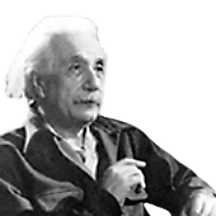
Einstein Albert
Albert Einstein was born to a German Jewish family; he studied in Munich, Germany, then in Zurich, Switzerland, where he received his doctorate.
From 1909, he taught and participated in scientific research at Universities and Academies throughout Europe. In 1921, he was awarded the Nobel prize for physics.
When Hitler rises to power, Einstein leaves Europe and settles in the United States with his second wife. There he serves as professor at the Institute for Advanced Study at Princeton until his death in 1955, at the age of 76.
Einstein made crucial contributions to modern physics. In 1905, When still only 26 and working in the patent office in Berne, he publishes a number of important papers:
- A mathematical analysis of Brownian Motion (the movement of particles in liquid or gas);
- An explanation of the photo-electric effect in terms of light as a shower of particles. This research was to bring him the Nobel Prize and was an important step in the development of the quantum theory which, paradoxically, Einstein denied all his life; as he used to say: ” God does not play dice with the world”.
- But, especially, Einstein establishes the connection between energy, the mass of matter and the speed of light, according to his famous equation and in contradiction to the prevailing law for the preservation of mass. His special theory of relativity shows that, approaching the speed of light, time, space, mass and energy are only different aspects of each others.
In 1915, he expanded this to the general theory of relativity which also incorporates the influence of gravitation and was scientifically confirmed at the time of the eclipse of the sun in 1919.
Who was the man Einstein?
A modest and informal person who enjoyed walking in the countryside and spent much time at his favorite hobby – playing the violin.
He was a pacifist; but nevertheless warned President Franklin D. Roosevelt against the danger of a German nuclear monopoly, a danger that influenced the U.S. government to develop the atom bomb.
Einstein was a proud Jew and from the 1920’s was active in behalf of Zionism, especially for the Hebrew University of Jerusalem as we can see in this archive document.
He rejected a proposal from David Ben-Gurion that he become President of the State of Israel. The contrary would have been surprising!
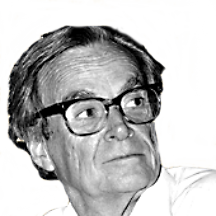
Feynman Richard
Richard Feynman was born in New York in 1918. He studied physics at the Massachusetts Institute of Technology. In 1942 he was awarded a doctorate from Princeton University and joined the team of scientists engaged in the development of the atomic bomb at Los Alamos. He taught at Cornell University and the California Institute of Technology and in 1954 He was elected to the American Academy of Science.
In 1965, Richard Feynman was awarded the Nobel prize in physics, together with Julian Schwinger and Sin-Itiro Tomonaga, for the development of a quantum electrodynamics theory.
In classical physics, electrodynamics was an established theory, but in the modern quantum physics, difficulties were encountered in its development until the turning point discovered by Feynman was reached.
Feynman’s calculative approach, with the help of which he succeeded in constructing the quantum electrodynamics theory, holds that in order to calculate the likelihood of a particle moving from a certain initial position to a certain final position, the probabilities must be calculated for every possible path separately, and the probabilities of all possible paths must be summarized. This method is known as “Feynman’s integrals”. He described the various paths with the help of the famous “Feynman’s diagrams” which simplified comprehension of the abstract processes and enabled, with the help of calculations he determined, the explanation of phenomenon that did not fit in with earlier calculations of the quantum theory.
Apart from being a brilliant scholar, Feynman was also famous for his talents as a drummer and for his special sense of humor. When he was working in Los Alamos, he would break into the safes in which top-secret material was kept and leave a note for the security officers with the message, “Guess who did it?” His books are written in a light style and with a great deal of humor, and achieved wide popularity.
Richard Feynman died in 1988.

Franck James
James Franck was born in 1882 in Germany. In 1906, he obtained a doctorate degree in Physics. He served as head of the Institute of Experimental Physics at Goettingen University. Franck, who was not personally harassed by the Nazis, adamantly refused to take measures against Jewish students and colleagues, and was compelled to leave Germany. Franck emigrated to the United States where he engaged in research at Johns Hopkins University and the University of Chicago.
James Franck was awarded the 1925 Nobel Prize in Physics together with Gustav Hertz. The Prize was awarded to them for the “Franck-Hertz” experiment, in which they accelerated electrons in a tube filled with mercury vapor. The results of the experiment were surprising: as they increased the voltage in the system, the electron current increased proportionately, as would be expected, until voltage of 4.9 volts. At that point, the voltage was much decreased.
These results corresponded with Niels Bohr’s theoretical calculations. The accelerated electrons transmitted energy in fixed quantities of 4.9V to the mercury electrons, allowing them to elevate to a higher energy level. This phenomenon was described by Bohr in his quantum atom model as “excitation”.
James Franck died in 1964.
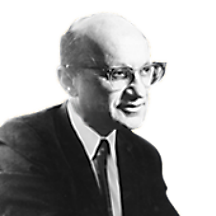
Friedman Jerome
Jerome Friedman was born in Chicago in 1930. In his youth he was inclined towards the arts, especially painting, but after he read Albert Einstein’s book “Relativity”, he began to take an interest in physics, studied at the University of Chicago, and in 1956 received his Ph.D. from 1960 he served as a professor at the Massachusetts Institute of Technology, his research focusing on particle physics.
Jerome Friedman and his research partners, Henry Kendal and Richard Taylor, were awarded the 1990 Nobel prize in Physics “For their pioneering investigations concerning deep inelastic scattering of electrons on protons and bound neutrons, which have been of essential importance for the development of the quark model in particle physics.”
Following the research of Ernest Rutherford, who first discovered the atom nucleus at the beginning of the 20th Century, great scientific effort was made to identify the building blocks of matter. Protons, electrons and neutrons were discovered, and later on more elementary particles.
The theoreticians Gell-mann and Zweig postulated a model in which each hadron, such as the proton and the neutron, is composed of triplets of particles called quarks. Friedman and his colleagues verified that model by observations they made on the internal structure of those particles, which make up the atom’s nucleus.

Gabor Dennis
Dennis Gabor was born in Hungary in 1900. He received the 1971 Nobel prize in Physics, “for his invention and development of the holographic method,” which is based on the phenomena of light interference.
Gabor’s invention preceded its time. Only with the invention of the laser rays did it become applicable in fields such as medicine, communication and computer science.
Dennis Gabor passed away in 1979.
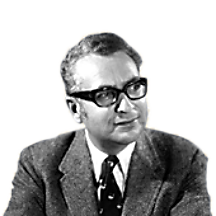
Gell-Mann Murray
Murray Gell-Mann was born in 1929 in New York. He received his PH.D. degree in Physics in 1951 from the Massachusetts Institute of Technology (M.I.T). In 1951, he transferred to the California Institute of Technology, where he engaged in the research of elementary particles.
In 1969, Gell-Mann was awarded the Nobel Prize in Physics “for his contributions and discoveries concerning the classification of elementary particles and their interactions”.
During the 1950’s, along with the development of particle accelerators, more elementary particles were discovered. In 1961, Gell-Mann proposed a classification system that can organize the numerous particles into categories, thereby introducing an order to the sub-atomic world.
His revolutionary achievement was his hypothesis regarding the existence of quarks, the foundation elements comprising all the elementary particles that are affected by strong interactions, such as proton and neutron. Furthermore, Gell-Mann postulated the existence of gluons, particles that supposedly bind the quarks together.
For these achievements, Gell-Man is considered one of the greatest physicists of our time.
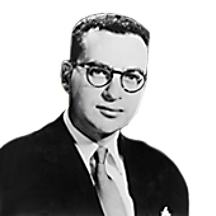
Glaser Donald
Donald Glaser was born in 1926 in Cleveland, U.S.A. During his youth he showed great musical promise, but chose to focus on the sciences. In 1950 he received a Ph.D. in physics and mathematics from the California Institute of Technology. In 1953 Glaser joined the staff of the University of Michigan and in 1957 became a full professor. In 1959 he moved to the University of California.
Donald Glaser was awarded the 1960 Nobel prize in Physics for the invention of the bubble chamber, which is used to detect and measure the course of elementary particles.
Glaser’s invention solved a difficult problem that faced particle physics researchers, who needed a suitable detector for the new generation of powerful particle accelerators. The “Cloud Chamber”, which had served this purpose in the past, was no longer suitable for the high velocities and enormous energies that these accelerators produced.
Glaser claimed that the idea for the development of the Bubble Chamber came to him when he was looking at a foaming beer bottle. He built a cell containing liquid under pressure, at a temperature only slightly lower than its boiling temperature. Energetic particles that pass through the liquid cause it to boil and leave behind them a trail of bubbles, which can then be photographed and measured.
His invention enabled experimental physicists to continue exploring the sub-atomic world.
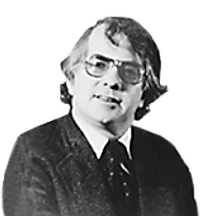
Glashow Sheldon
Sheldon Glashow was born in New York in 1932. He studied physics at Cornell University and at Harvard University, where he obtained his Ph.D. in 1959. Subsequently, Glashow was appointed Head of the Harvard University Physics Department.
In 1979, Glashow was awarded the Nobel Prize in Physics together with Weinberg and Abdus-Salam “for their contribution to the theory of the unified weak and electromagnetic interaction between elementary particles including, inter alia, the prediction of the weak neutral current”.
Glashow had many achievements in the field of elementary particles, but the Nobel Prize was awarded to him for what was considered his most outstanding contribution: the unification of the weak interaction and the electromagnetic interaction. Until this discovery, physics described the universe by means of four forces: gravitation, electromagnetic interactions, strong interactions and weak interactions. Glashow showed that the weak and the electromagnetic interactions are different aspects of the same whole.
It can thus be said that Glashow brought physics a step closer to its ultimate goal – a Unified theory of all forces acting in nature.
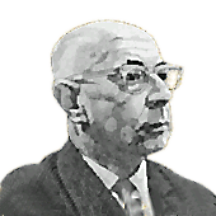
Hertz Gustav
Gustav Hertz was born in 1887 in Germany.
He received the 1925 Nobel prize in physics, together with James Franck, “for their discovery of the laws governing the impact of an electron upon an atom”.
The so called “Franck-Hertz experiment” gave empirical evidence to Niels Bohr’s atom model, thus helping it become paradigmatic in modern physics.
Gustav Hertz passed away in 1975.

Hofstadter Robert
Robert Hofstadter was born in New York in 1915. He completed his studies in physics and mathematics cum laude in 1935, and was awarded his doctorate from Princeton University in 1938. In World War Two, he was engaged in weapons development. In 1950 he was appointed professor of physics at Stanford University and moved into the field of nuclear physics.
Robert Hofstadter was awarded the Nobel prize for physics in 1961, “for his pioneering studies of electron scattering in atomic nuclei and for his thereby achieved discoveries concerning the structure of the nucleons.”
A very powerful electron accelerator, the construction of which had by then been completed at Stanford, helped Hofstadter in his research and enabled him to make some important discoveries in atomic research. He succeeded in measuring the volume, form and density of atomic nuclei, and discovered that the density of the atom was more or less uniform over its entire volume. When he studied the components of the atom, he discovered that the proton and neutron were almost completely identical, except for the proton being positively charged, while the neutron is neutral.
Robert Hofstadter’s discoveries brought about changes in the accepted structure of the atom and advanced research on the forces active within it.
Robert Hofstadter died in 1990.

Josephson Brian
Brian Josephson was born in Wales in 1940. He studied physics in the Trinity College, concentrating in Super-Conductivity.
In 1973 Josephson received the Nobel prize in physics, “for his theoretical predictions of the properties of a super current through a tunnel barrier, in particular, those phenomena which are generally known as the Josephson effects.”
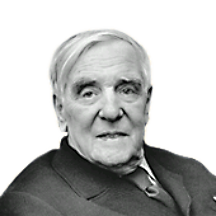
kapitsa Pyotr
Pyotr Kapitsa was born in Russia in 1894.
He received the 1978 Nobel prize in physics “For his inventions and discoveries in the area of low temperature physics.”
Pyotr Kapitsa passed away in 1984.
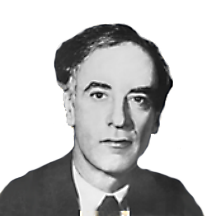
Landau Lev
Lev Landau was born in Baku, Azerbaijan in 1908.
He received the 1962 Nobel prize in physics for his studies on super conductivity and super liquidity, especially for his work on liquid Helium.
Landau is famous for his classic work on theoretical physics, consisting of ten volumes.
Lev Landau passed away in 1968.
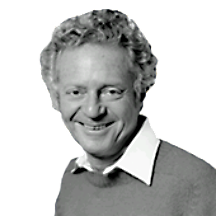
Lederman Leon
Leon Lederman was born in New-York in 1922. He studied chemistry at first, later physics, receiving his doctor degree at Columbia university in 1951. He became a brilliant researcher, responsible for many important discoveries in his field.
Leon Lederman received the 1988 Nobel prize in physics, together with Jack Steinberger and Melvin Schwartz, “For the neutrino beam method and the demonstration of the doublet structure of the leptons through the discovery of the muon neutrino.”
The standard model of particle physics divides the elementary particles into two families: quarks and leptons. Until the end of the 1950’s only three leptons were known: electron, muon and neutrino. The neutrinos can be produced from either electrons or muons, and can turn back to be either of them.
In 1960, scientists assumed the existence of two kinds of neutrinos: one that one that is associated with electrons and the other, which is associated with muons. However, they had much difficulty in establishing an empirical evidence to support their assumption.
In 1961 Lederman and his colleagues executed the neutrino experiment that was appreciated by the Nobel committee. They used a muon originated neutrino beam, produced by high energy collisions in the Brookhaven accelerator. All the neutrinos reverted to being muons, not a single on turned into an electron; this proved that the neutrino observed in this experiment is a different kind of particle – a muon-neutrino.
The differentiation between electron-neutrino and muon-neutrino is of much theoretical importance. The electron and the electron neutrino are considered a “doublet”, two leptons that belong to the same generation. The muon and the moun-neutrino form another “doublet”, belonging to a different generation altogether.
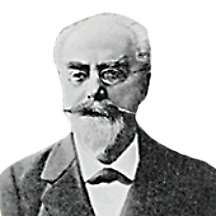
Lippmann Gabriel
Gabriel Lippmann was born in 1845 in Luxembourg. In 1875, he was awarded a doctorate in physics at the Sorbonne University, Paris, and became professor of mathematical physics. Lippmann also served as chairman of the experimental physics department. In 1912, Lippmann was elected President of the French Academy of Science.
Gabriel Lippmann was awarded the 1908 Nobel prize in physics, for the development of the technique of color photography, based upon the phenomenon of light interference.
Lippmann placed a sheet of glass coated with a light-sensitive emulsion In front of the object to be photographed. Then, he created with the aid of a mirror a collision between the light waves comming from the oposite directions. Thus, the interference of light was captured on the photographic sheet of glass, as intermittent light and dark bands. The distance between the bands was determined by the color of the light that produced them.
When one looks at such a photograph, the interference is recreated, but this time in the eye of the observer, who enjoys the colorful picture of the object.
Although it was color photography that gained Gabriel Lippmann world recognition, his other scientific achievements are no less important. He developed various instruments, engaged in seismography and astronomy, and even submitted an significant thesis on electron research.
Gabriel Lippmann passed away in 1921.

Michelson Albert
Albert Michelson was born in Strelno, Germany in 1852. When he was three years old, his family immigrated to the United States. Subsequently, he studied physics, specializing in the field of optics. Michelson was professor of physics at the Case School of Applied Science in Cleveland, at Clark University and at the University of Chicago. In his later years, he went to California to calculate astronomical measurements. He died in 1931.
In 1907, Albert Michelson was awarded the Nobel Prize in physics “for his optical precision instruments and the spectroscopic and meteorological investigations carried out with their aid.”The best known and most important achievement was the Michelson-Morley experiment of 1887. According to the prevailing opinion of physicists at that time, the speed of light varies in relation to the direction of the earth’s movement. Michelson and his colleague, Edward Morley built an interferometer, an instrument for precise measurement determination. With the interferometer, they were able to prove that the speed of light is constant and does not vary according to the relative movement of the earth.
This discovery posed a difficult dilemma for classical physics. Eighteen years later, the dilemma was solved with the publication of Albert Einstein’s theory of relativity.
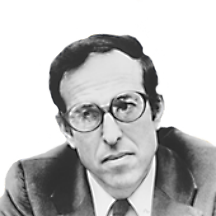
Mottelson Benjamin
Benjamin Mottelson was born in Chicago in 1926.
He received the 1975 Nobel prize in physics, together with Aage Bohr and James Rainwater, for the development of a collective nucleus model, which explains the electric quadrupole phenomena, an uneven distribution of electrical charge in the nucleus.
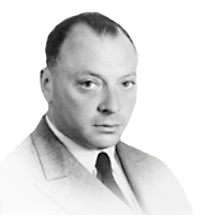
Pauli Wolfgang
Wolfgang Pauli was born in 1900 in Vienna, Austria. In 1921 he received a Ph.D. in physics in Munich and worked with the well known physicists Max Born, James Franck and Niels Bohr, who introduced him to the field of sub-atomic particles and Quantum Mechanics. Later he served as Professor of Physics in Hamburg and Switzerland. During the second world war he worked at the Institute for Advanced Study in Princeton, then returned to Zurich, where he passed away in 1958.
Wolfgang Pauli was awarded the 1945 Nobel prize in Physics “For the discovery of the Exclusion Principle, also called the Pauli Principle.” The Exclusion Principle states that in a multi-electron atom there can be only one electron in each quantum state.
Pauli also discovered that the electron has an innate characteristic that was later called spin. He thereby increased the number of parameters that describe the electron’s state to four: energy, angular momentum, spin and the sum of the spin and the momentum. According to Pauli’s Exclusion Principle, this set of four numbers can characterize only one electron in the atom.
Pauli made an additional important contribution to the field of nuclear physics. In 1930 he postulated the existence of the neutrino, an elusive elementary particle that was empirically discovered only 25 years later.

Penzias Arno
Arno Penzias was born in 1933 in Munich, Germany. In 1939 his family emigrated to the United States.
Arno Penzias was awarded the Nobel prize for physics in 1978, Together with Robert Wilson, “for their discovery of cosmic background radiation”, the echoes of the creation of the universe in the `big bang’, eighteen billion years ago.
Penzias’ discoveries constituted an empirical confirmation of the ‘big bang’ theory and turned it into the central model for describing the history of the universe.
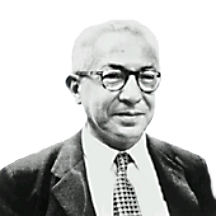
Rabi
Isidor Rabi was born in 1898 in Rymanow, then Austro-Hungary, to-day Poland. When he was one year old, his family immigrated to the United States. His parents were extremely orthodox and hoped that he would become ordained as a rabbi, but he showed an interest in technology and science.
He began to study chemistry and later physics, and in 1928 was awarded his doctorate from Columbia University. After receiving his doctorate, he left for Europe to work with some of the world’s greatest physicists who were developing the quantum theory. He later returned to Columbia University and in 1940 was elected to the American Academy of Science.
During World War Two, Rabi turned down an invitation to participate in the project for the development of the atomic bomb, and after the war he was active in support of civilian supervision of nuclear power.
Isidor Rabi was awarded the 1944 Nobel prize in physics, “For his resonance method for recording the magnetic properties of atomic nuclei”, a method that provided valuable information for research on the detection of magnetic infection of crystals. This method is also used in medicine and biology for the identification of materials in tissues.
When he was awarded the Nobel prize, it was said that he had “established radio contact with the sub-nuclear world“.
Isidor Rabi passed away in 1988.
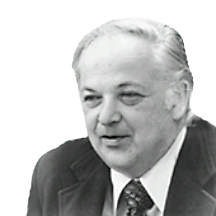
Richter Burton
Burton Richter was born in New-York in 1931.
He received the 1976 Nobel prize in physics, together with Samuel Ting, for an experiment he conducted, in which a heavy elementary particle of a new kind had been discovered.
The discovery of “Psi” confirmed Glashow’s theory on the existence of a “c” quark, and gave empirical evidence to support the standard model of elementary particles.
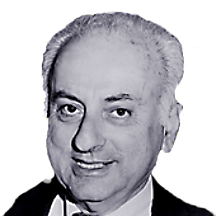
Schwartz Melvin
Melvin Schwartz was born in New-York in 1932. He studied physics at Columbia University, received his Ph.d. in 1958 and joined the staff as a notable lecturer and researcher.
Melvin Schwartz received the 1988 Nobel prize in physics, together with Leon Lederman and Jack Steinberger, “For the neutrino beam method and the demonstration of the doublet structure of the leptons, through the discovery of the muon neutrino.”
The standard model of particle physics divides the elementary particles into two families: quarks and leptons. Until the end of the 1950’s only three leptons were known: electron, muon and neutrino. The neutrinos can be produced from either electrons or muons, and can turn back to be either one.
In 1960, scientists assumed the existence of two kinds of neutrinos: one that is associated with electrons and the other, which is associated with muons. However, they had much difficulty in establishing an empirical evidence to support their assumption.
In 1961 Schwartz and his colleagues executed the neutrino experiment that won them the Nobel prize. They used a muon originated neutrino beam, produced by high energy collisions in the Brookhaven accelerator. All the neutrinos reverted to being muons, not a single on turned into an electron; this proved that the neutrino observed in this experiment is a different kind of particle – a muon-neutrino.
The differentiation between electron-neutrino and muon-neutrino is of much theoretical importance. The electron and the electron neutrino are considered a “doublet”, two leptons that belong to the same generation. The muon and the moun-neutrino form another “doublet”, belonging to a different generation altogether.

Schwinger Julian
Julian Schwinger was born in 1918 in the United States.
He received the 1965 Nobel prize in physics, together with Richard Feynman and Sin-Itiro Tomonaga, “for their fundamental work in quantum electrodynamics”, which had a profound influence on the physics of elementary particles.
Julian Schwinger passed away in 1994.
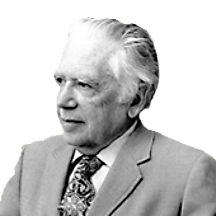
Segre Emilio
Emilio Segre was born in Tivoli, Italy, in 1905. He began his engineering studies in Rome and later moved over to physics, which he studied under Nobel laureate Enrico Fermi .He was awarded his doctorate in 1928. He taught at Rome University and was appointed Head of the Physics Department at the University of Palermo in 1936.
In 1938, in the wake of the anti-Semitic regulations in the civil service enacted by the fascist government, Segre emigrated to the United States, where he joined the University of California at Berkeley.
He became an American citizen and participated in the American effort to build the atomic bomb. After his retirement in 1978, he returned to Rome University where he died in 1989.
In 1959, Emilio Segre was awarded the Nobel prize for physics, together with Owen Chamberlain, “for their discovery of the antiproton.”
The proton is a positively charged particle that is found in varying numbers in atomic nuclei. The antiproton is a similar particle, but is negatively charged. The disparity between their charges turns every encounter into a dramatic event in which they nullify one another .

Steinberger Jack
Jack Steinberger was born in 1921 in Germany. When the Nazis came to power his parents sent him to the U.S.A. At first he studied Chemical Engineering and decided to concentrate on physics only after the end of World War II. In 1948 he received his Ph.D. from the University of Chicago, and in 1950 he joined the staff of Columbia University as a researcher.
Jack Steinberger received the 1988 Nobel prize in physics, together with Melvin Schwartz and Leon Lederman, “For the neutrino beam method and the demonstration of the doublet structure of the leptons, through the discovery of the muon neutrino.”
The standard model of particle physics divides the elementary particles into two families: quarks and leptons. Until the end of the 1950’s only three leptons were known: electron, muon and neutrino. The neutrinos can be produced from either electrons or muons, and can turn back to be either one.
In 1960, scientists assumed the existence of two kinds of neutrinos: one that is associated with electrons and the other, which is associated with muons. However, they had much difficulty in establishing an empirical evidence to support their assumption.
In 1961 Steinberger and his colleagues executed the neutrino experiment that was appreciated by the Nobel committee. They used a muon originated neutrino beam, produced by high energy collisions in the Brookhaven accelerator. All the neutrinos turned back to muons, not a single one turned into an electron, which prove that the neutrino observed in this experiment is a different kind of particle – a moun-neutrino.
The differentiation between electron-neutrino and muon-neutrino is of much theoretical importance. The electron and the electron neutrino are considered a “doublet”, two leptons that belong to the same generation. The muon and the moun-neutrino form another “doublet”, belonging to a different generation altogether.
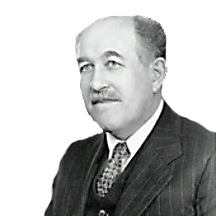
Stern Otto
.Otto Stern was born in 1888 in Sorau, which was then part of Germany. With the rise of the Nazis, he emigrated to the United States where he continued his research.
In 1943 he was awarded the Nobel prize in physics for his work with the molecular beam, in which the magnetic moment of an ion current was examined and found to split into only two directions, which contradicted the classical physics assumption that predicted uniform distribution.
The `Stern-Gerlach’ experiment substantiated the projection of quantum mechanics, which at the time was still in its infancy, and demonstrated the limitations of classical physics.
Otto Stern passed away in 1969.

Steven Weinberg
Steven Weinberg was born in 1933 in New-York.
In 1979, he received the Nobel prize in physics, together with Sheldon Glashow and Abdus-Salam, “For their contributions to the theory of the unified weak and electromagnetic interaction between elementary particles, including inter-alia the prediction of the weak neutral current.”
The three scientists reduced the number of interactions by which physics describes the universe from four to three and in so doing advanced science toward its ultimate goal: the creation of a unified theory of all forces acting in the cosmos.
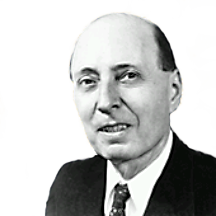
Wigner Eugene
Eugene Wigner was born in Budapest in 1902. In 1925 he received his doctorate degree in engineering from the University of Berlin and in 1930 he immigrated to the United States, where he took part in theoretical nuclear research at Princeton University. In 1942, Wigner joined the Manhattan project, set up by president Roosevelt to produce an atom bomb.
After the Second World War, Wigner was in charge of research and development, under the atomic energy commission. Wigner often expressed his disappointment that atomic energy was used mainly for war, rather then for peace.
Eugene Wigner received the 1963 Nobel prize in physics, “For his contributions to the theory of the atomic nucleus and the elementary particles, particularly through the discovery and application of fundamental symmetry principles.”
Wigner made a major contribution to science by introducing symmetry laws and mathematical group theory into nuclear and particle physics.
In so doing, he turned some of the most abstract mathematical concepts into useful tools of contemporary physics.
His work enables one to predict the probability of nuclear reactions, and has been of great importance to nuclear research.
Eugene Wigner passed away in 1995.

free text
Select a Nobel category:
- Chemistry
- Economics
- Literature
- Medicine
- Peace
- Physics
Select first letter of winner's name:
- A
- B
- C
- D
- E
- F
- G
- H
- I
- J
- K
- L
- M
- N
- O
- P
- Q
- R
- S
- T
- U
- V
- W
- X
- Y
- Z
Search Results
Found 0 Results
No search results

region on map
